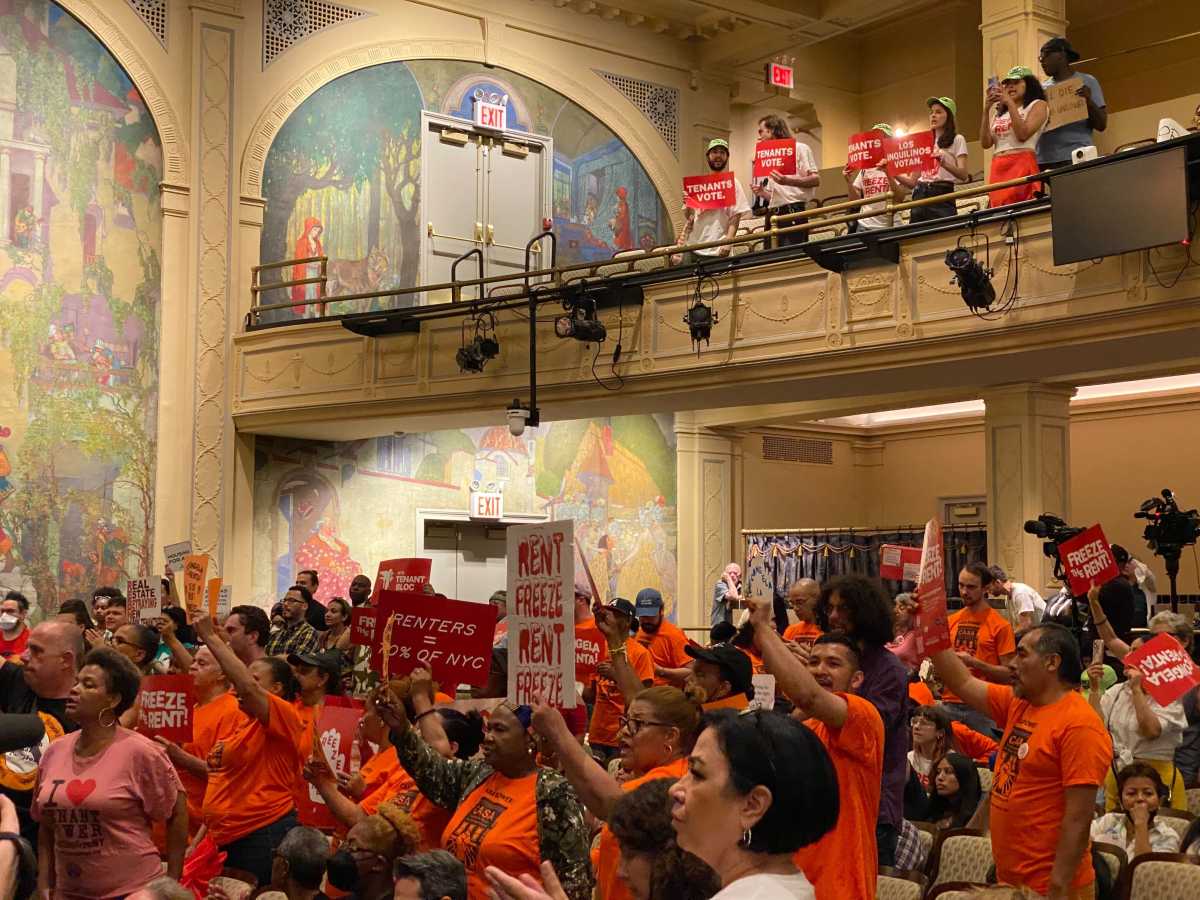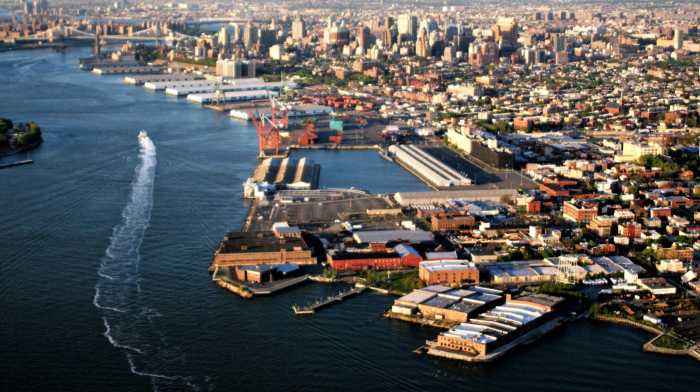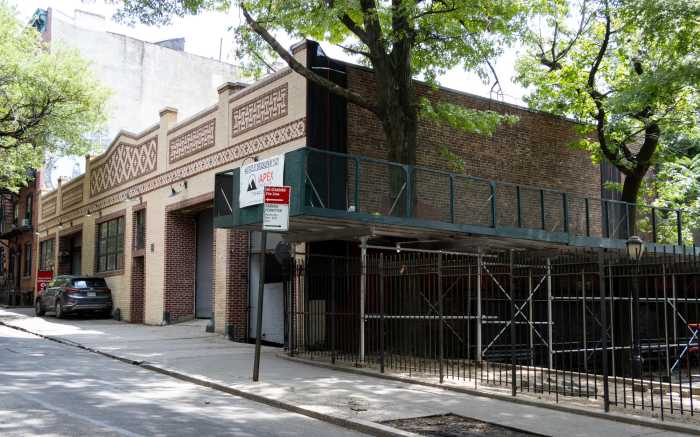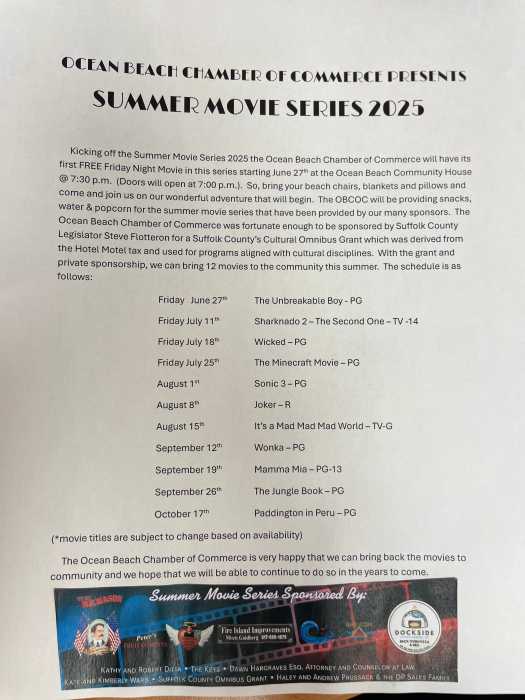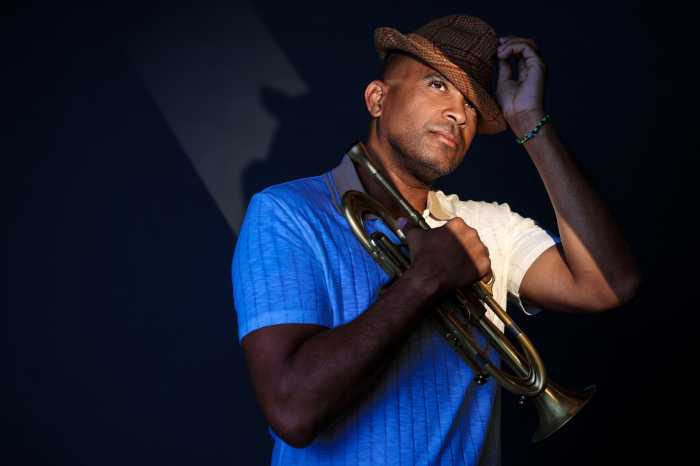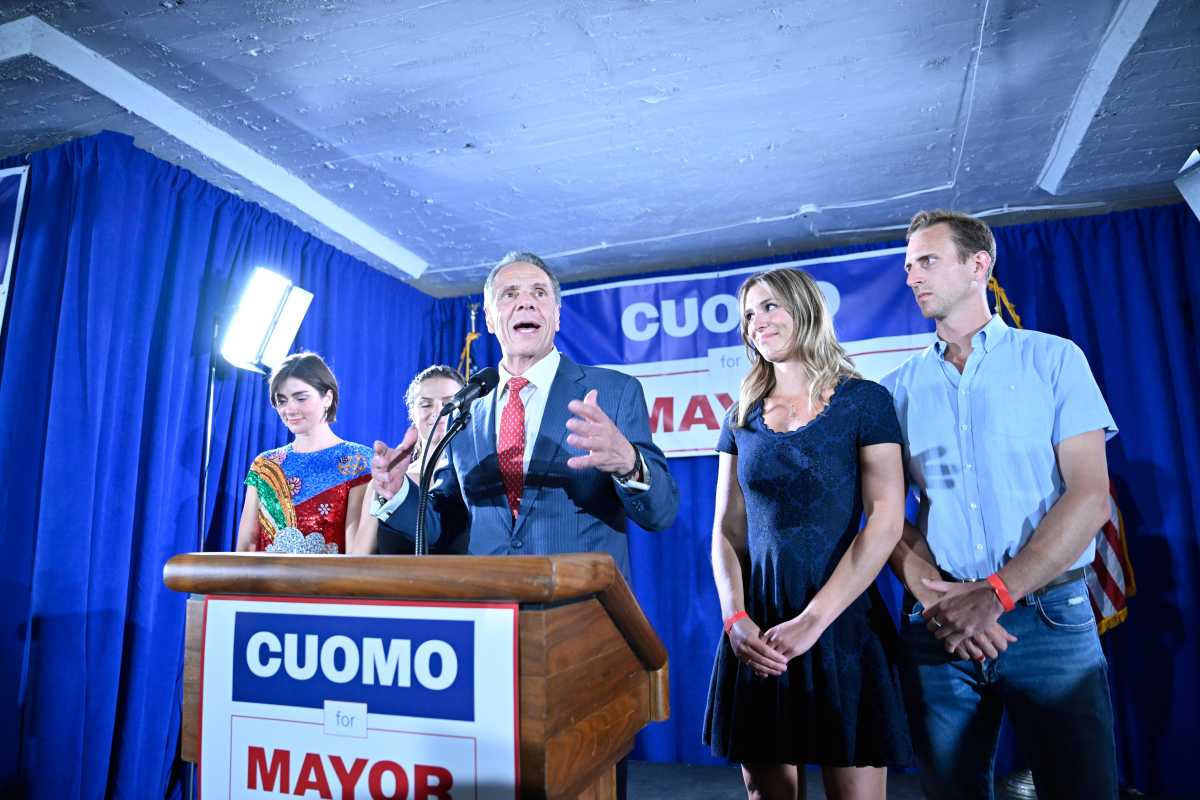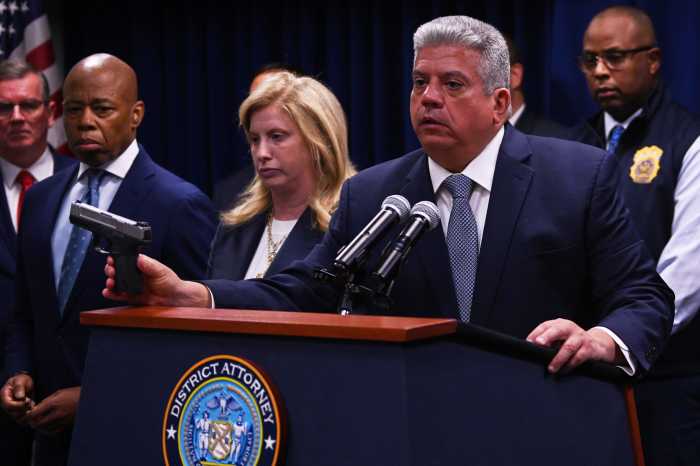Borough President Marty Markowitz invited leaders of a select few groups
and elected officials to a closed-door meeting Wednesday to “participate
in dialogue” about developer Bruce Ratner’s Atlantic Yards project,
leaving critics of the plan out in the cold.
The media was also barred.
A small group of protesters showed up outside Borough Hall for the 4 pm
meeting to draw attention to Markowitz’s perceived blacklisting of
groups outspoken in their condemnation of the Forest City Ratner proposal
to build a basketball arena, housing and office skyscrapers.
“This thing is really a sock in the face,” said Patti Hagan,
co-founder of the Prospect Heights Action Coalition. “PHAC, Brooklyn
Vision, Develop-Don’t Destroy Brooklyn; all these groups have been
working relentlessly for more than a year to bring this problem to people’s
attention, especially the lack of process.”
She stood outside with fliers outlining the footprint of the planned development
area, and tried to engage anyone headed towards Borough Hall in discussion.
The 24-acre plan, which would engulf a substantial portion of Prospect
Heights stretching from the intersection of Flatbush and Atlantic avenues,
has spurred the creation of neighborhood associations, employment and
housing advocacy groups, and development coalitions over the past year
since it was announced.
A Markowitz aide said those were exactly the groups they tried to avoid
bringing into the meeting, and instead favored “neutral” and
“longstanding civic associations” that were not arena-specific.
Borough Hall spokesman Michael Kadish described the exclusion as a measure
to sidestep overly contentious discussion and avoid drifting off topic,
which he said was about the “process of offering community input”
to the developer and the state, which is expected to lead the application
through environmental review.
“We’re coming up with a way that the community can have input
to this,” said Kadish, and indicated that the other groups would
be part of the process.
Still, the select attendees of the private community meeting could not
avoid the topic of exclusion.
When Downtown-Brooklyn Heights Councilman David Yassky left the meeting
at 5:30 pm, Hagan approached him and asked what was going on inside.
“Well, right now they’re discussing the need for broader participation,”
he said.
Hagan asked Yassky’s own thoughts on the plans?.
“I’d like to see it come in and done right,” he replied.
“I’d like to see it done smaller.” Yassky said he wanted
to see a secure plan for traffic, but that the meeting wasn’t really
discussing that.
“We never really got to substance, but we talked about process and
community outreach,” he said.
Duke Saunders, a 40-year resident of Prospect Heights and head of the
Vanderbilt Avenue Merchants Association, who ducked out of the meeting
momentarily, informed the group outside, “You have infiltrators,”
saying their exclusion was the predominant topic of discussion later in
the meeting.
Saunders, who is also involved with BUILD, a job advocacy group in negotiations
with Forest City Ratner for a community benefits agreement [see story
at right], which was also excluded from the meeting, said the general
feeling, and his own, was that “more people should be included in
this conversation.”
To that, Schellie Hagan, the other founder of PHAC, smiled.
“We’re the 800-pound gorilla that’s not in the room,”
she said, pausing to set down her poster board sign protesting Prospect
Heights’ absence at the meeting.
Sandy Balboza, president of the Atlantic Avenue Betterment Association,
huddled on the steps of Borough Hall rubbing her exposed arms on the chilly
early autumn evening with a glum expression on her face. She appeared
the unwitting protester, and stayed seated while the others handed out
flyers.
For Balboza, this was personal.
“I didn’t know what to do,” she said, when she learned
that the meeting required an invitation letter, which she and her 7-year-old
organization never received. Like many of the invitees, her group just
recently joined DDDB’s coalition against the proposal.
The letters, dated Sept. 22, identified invitees as “active residents”
and proclaimed Markowitz’s commitment to “finding solutions
to community concerns … for your neighborhoods and for all of Brooklyn.”
“I’m on four task forces at Borough Hall. I’ve been to
200 meetings here,” said Balboza. “I’m not some radical
nut.”
Lucy Koteen, a member of the Fort Greene Association as well as Develop-Don’t
Destroy Brooklyn, signed in to the meeting with her married name, Young,
to avoid being recognized and ejected as a member of DDDB.
Outside, in a hushed voice, Koteen told The Brooklyn Papers that the biggest
request at the meeting was to have the developer come and talk to the
group about the state process of review for the land.
“[The borough president’s office] made assumptions that it would
go through the Empire State Development Corporation,” she said. “They
did not want us to even talk about the possibility of ULURP,” Koteen
said, referencing a much more stringent and publicly accessible city-level
review process that was recently urged by three local community boards.
Though Prospect Heights resident Gib Veconi, founder of the Prospect Heights
Neighborhood Development Council, which he started this past February,
said the meeting was a positive step, he was dismayed at the turnout.
“Even though the project is located almost entirely in Prospect Heights,
in a meeting of 30 people, only two were from [the neighborhood],”
he said. “I think that’s an issue. Not to infer it was planned
that way, but I think, going forward, in order for processes like this
to gain traction, people in the community have to feel like they’re
being well represented.”


